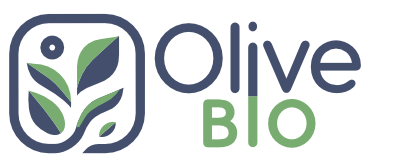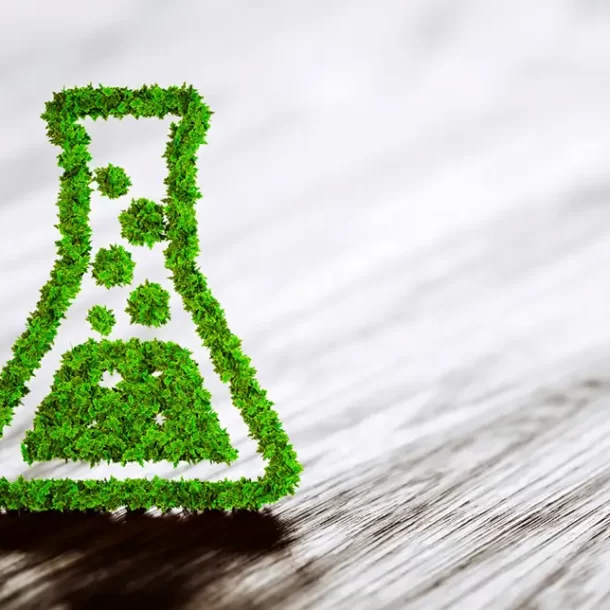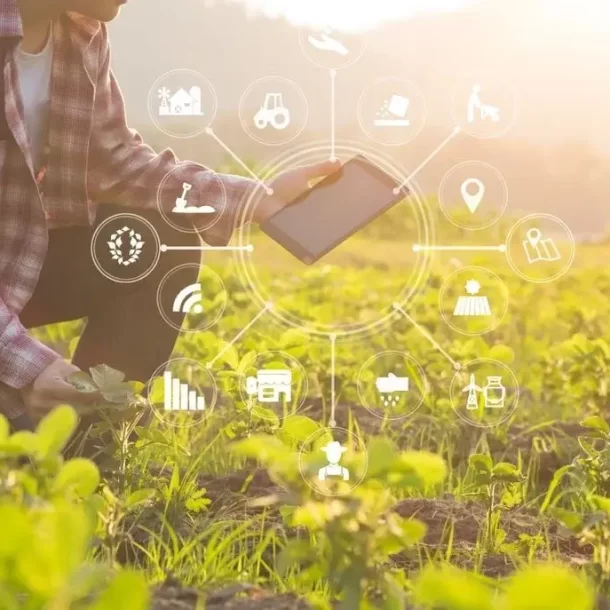
What Are the Advantages and Disadvantages of Bioplastics?
The invention of synthetic polymers dramatically changed the world in which we live. For better and worse, these classes of materials, which include synthetic plastics, have reshaped our interconnected social, economic, and ecological landscapes in a myriad of ways.
In 1869, John Wesley Hyatt invented the first synthetic polymer as a substitute for the natural ivory used in billiards (Science History Institute, 2023). The world’s first thermoset synthetic plastic, called Bakelite®, was created decades later by Leo Baekeland in 1907 (American Chemical Society, 2023). Since that time, the development of synthetic plastics has evolved and become essential to many areas of modern life. Their versatility, durability, and range of applications offer numerous benefits, yet their widespread adoption has also led to significant challenges.
The utility of plastics can be seen in the containers we use at home and on the go, in the stores and the medical facilities we visit, and throughout the places we learn, work, and recreate. However, it is just as easy to find evidence of their disutility. Plastics are as effortless to use as they are to dispose of; their waste has become an untenable eyesore of pollution in our oceans, rivers, and in many other environments that house diverse communities of people, flora, and fauna (Figure 1).
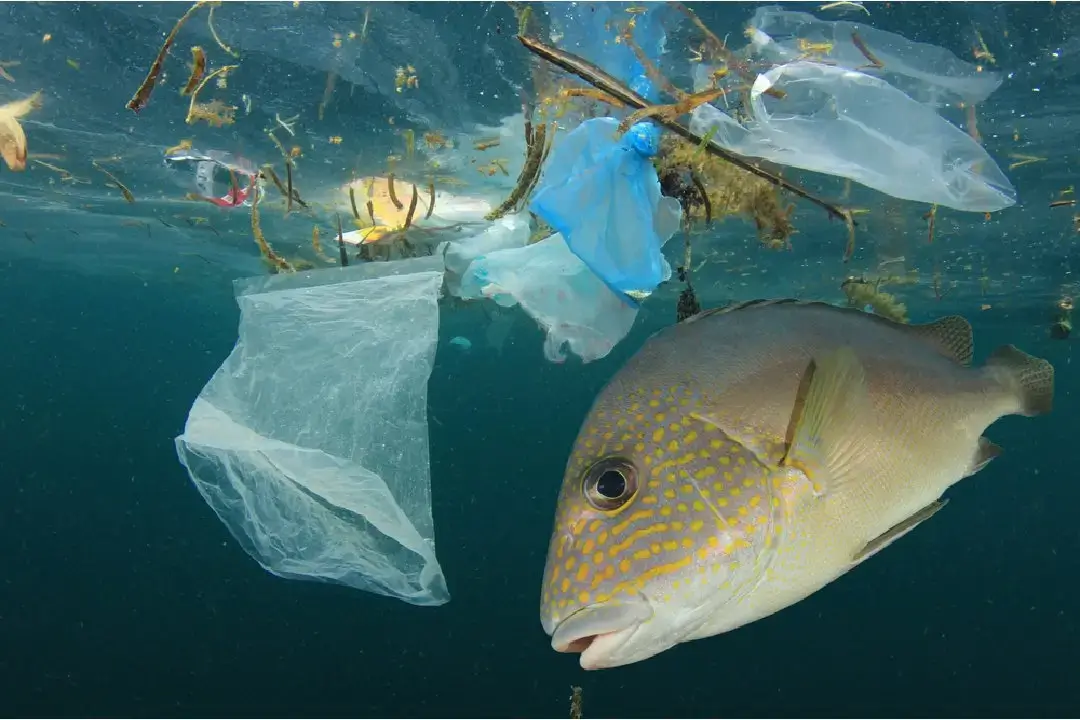
A family of polymers called bioplastics has captured the interest of scientists, businesses, and members of the public. This group of alternative materials has different properties and evolving applications that hold promising solutions to many of the life cycle issues associated with the production, consumption, and disposal of synthetic plastics.
In the sections that follow, we provide an overview of bioplastics, their main advantages and disadvantages as compared to synthetic plastics, and additional considerations for the successful future of the bioplastics industry.
Characteristics and Types of Bioplastics
Characteristics of Bioplastics
The “bio” in bioplastics means that these materials are bio-based, biodegradable, or both (European Bioplastics, 2022). Shen et al. (2020) discuss the degradation principle of bioplastics, stating that the bacteria, fungi, algae, and other microbes that exist in nature should be able to fully decompose the material without any residual byproducts or ecotoxic effects.
- Bio-based refers to the plastic material being derived, either partly or fully, from plant crops such as corn, sugarcane, or cellulose, or that are derived from or synthesized by microbes such as bacteria.
- Biodegradable is a characteristic of the chemical structure of a plastic material that allows it to remain in its original form when stored, meet use requirements (e.g., garbage can liner that doesn’t break), and then degrade and disappear into the natural environment after disposal (Shen et al., 2020). A biodegradable material can be converted to biomass, CO2, and water; however, methane can also be the result in anaerobic conditions, such as in a landfill site (Kjeldsen et al., 2018).
The environment (e.g., marine, soil, industrial facility, backyard compost pile) and presence of different types of microbial communities affect biodegradability processes (Haider et al., 2019, Emadian et al., 2017). While bioplastics can degrade in the natural environment at a faster pace than their petrochemical counterparts, this degradability depends on important factors, including the aforementioned chemical structure of the bioplastic material; however, biodegradability does not depend on the resource basis (i.e., derived from fossil fuels vs. renewables) of the material (European Bioplastics, 2023).
There are few consistently used standards that define biodegradability for a product. At a minimum, these would ideally include information about the required environment and its conditions, level of degradation and the timeframe within which that level is reached. Without standard specifications for a bioplastic product, labeling it as “biodegradable” becomes an ambiguous term that often confuses and misleads consumers (European Bioplastics, 2022).

Figure 2: Example of buried “biodegradable” materials, showing different levels of degradability over time.
Types of Bioplastics
Heinrich Anton De Bary, German botanist and founding father of plant pathology, first described the microorganism Bacillus megaterium in 1884. In 1925, French microbiologist Maurice Lemoigne discovered an important energy storage molecule in B. megaterium (Eppinger et al., 2011). It was a polyester called polyhydroxybutyrate (PHB), which is considered to be the first known bioplastic.
At the time of Lemoigne’s discovery, petroleum was abundant and cheap and plastic pollution was not yet a concern. As a result, further development and adoption of PHB as a bioplastic technology didn’t occur until decades later.
PHB is a biodegradable and bio-based polymer that is naturally produced and stored by different microorganisms as a reserve carbon and energy source (Pettinari et al., 2021). PHB polymers are a subclass of polyhydroxyalkanoates (PHAs), which are a group of biodegradable bioplastics produced by bacteria through fermentation of organic materials. They have diverse properties and can be used for applications such as packaging, agricultural films, and medical devices.
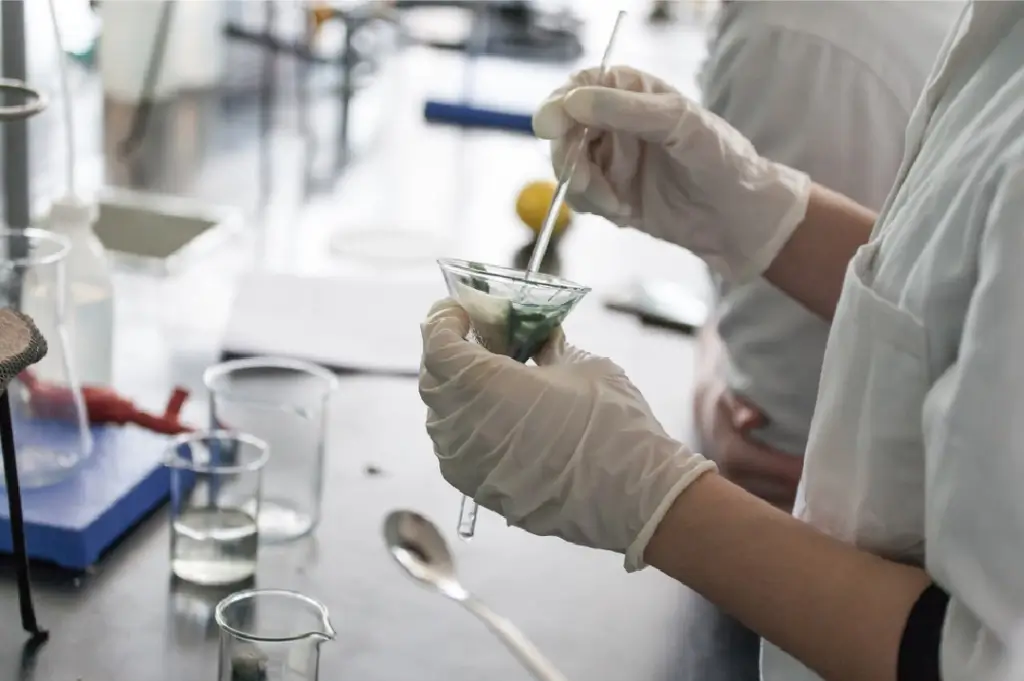
Polylactic Acid (PLA) is derived from cornstarch or sugarcane and is used in various applications, including packaging, disposable cutlery, and textiles. PLA is typically compostable under industrial composting conditions. Other bioplastics include:
- Polybutylene succinate (PBS): PBS is produced from renewable resources like corn or sugarcane. It has applications in packaging, agriculture, and textiles.
- PHA-PLA blends: Blending PHA and PLA can enhance mechanical properties and broaden the range of applications. These blends are used in items like disposable cutlery and packaging.
- PHA-PBS blends: Blending PHA and PBS can create materials with improved mechanical properties, making them suitable for applications in packaging and durable goods. PBS was originally derived from petroleum-based feedstock, but more recently has been created from bio-based feedstocks such as sugarcane (Aliotta et al., 2022).
This section was meant to provide a very brief overview of different types of bioplastics. For a more in-depth look at the origin, uses, and advantages and disadvantages of each, please read our blog titled “What Are The Properties, Advantages, and Disadvantages of Polyhydroxyalkanoates (PHAs)?”. It includes details about polymers that are fossil fuel derived but are biodegradable, such as polybutylene adipate co-terephthalate (PBAT), as well as information about polyolefins and polyesters that are bio-based (or partly bio-based) but non-biodegradable, such as polyethylene (PE), polypropylene (PP), or polyethylene terephthalate (PET).
Advantages of Bioplastics
Bioplastics have several advantages that have the potential to contribute to a more sustainable life cycle of sourcing, production, consumption, disposal, and degradation (European Bioplastics, 2022).
The section below includes a brief overview of some of the main benefits:
- Reduced carbon footprint: The production of synthetic plastics involves extracting and processing fossil fuels, typically resulting in a higher carbon footprint. Bioplastics are often derived from renewable resources such as plants and agricultural waste, which can help reduce the carbon footprint associated with traditional petroleum-based plastics.
- However, there are still some carbon footprint related challenges associated with bioplastic production. For example, a lot of energy goes into producing agricultural crops (e.g., corn, sugarcane) often used as feedstock for bioplastic production. Crops are harvested and processed with machinery that can contribute to high carbon footprints. Another example is when forests, which are natural carbon sinks, are cleared to create space for planting and harvesting crops. Factors related to higher or lower carbon footprints depend on the type of feedstock and the production method(s) used to make different types of bioplastic.
- Biodegradability and compostability: Some bioplastics are designed to be biodegradable or compostable, meaning they can break down more easily in the environment, potentially reducing plastic pollution. In contrast, most synthetic plastic is not easily biodegradable and breaks down into microplastic, leading to long-lasting waste in the environment.
- Note on compostability: as discussed earlier for biodegradability, there are also caveats for compostability. Most bioplastic products are designed to be compostable; however, in many cases this can only occur in the tightly controlled conditions of industrial composting facilities that can reach higher temperatures to both sterilize and break down organic waste in ways that home composting systems cannot. Backyard composting systems run at lower temperatures than commercial facilities, and conditions are much more variable and less controlled. As a result, most bioplastics can’t degrade in home compost systems (Yale Sustainability, 2022, Science Learning Hub – Pokapū Akoranga Pūtaiao, 2023). PHA, cellulose, and starch are among the few biodegradable polymers that are compatible with home composting (Nova Institute).
- Lower dependence on fossil fuels: Unlike synthetic plastics, bioplastics utilize feedstocks that are not solely reliant on fossil fuels, contributing to resource diversification and decreased dependency on petroleum.
- Innovative properties: Similar to traditional synthetic plastics, bioplastic materials can be engineered with specific properties, such as being lightweight, flexible, and having various degrees of transparency, making them suitable for a range of applications.
- Renewable resource utilization: Utilizing agricultural or plant-based feedstocks can provide additional income opportunities for farmers. Alternatively, using waste-based feedstocks for bioplastic production can alleviate pollution and greenhouse gas emissions. Landfills are a major source of waste methane. Methanotrophic bacteria, which can metabolize methane as a source of carbon, can be used to produce PHB (See Figure 4, Rostkowski et al., 2012). Researchers have also developed a process that captures carbon dioxide (CO2) waste and uses it as a feedstock for bacteria to produce bioplastics (Zhang et al., 2022).

Figure 4: Cradle-to-cradle feedstock cycle for PHB and biogas methane (Rostkowski et al. 2012)
These advantages connect to the principles of a circular economy, in which bioplastic materials are made from renewable or recycled resources in the “beginning of life” process that is equally important to the “end of life” processes that include disposal, recycling/composting, and biodegradation (Rosenboom et al., 2022).
Disadvantages of Bioplastics
The benefits of bioplastics are not free of certain tradeoffs. These tradeoffs relate to the research & development (R&D), education & outreach, and manufacturing & infrastructure needs that must be met to ensure the successful adoption of bioplastics on a larger scale. Examples include:
- Competition with food crops: The cultivation of feedstock crops for bioplastics could potentially compete with food production, raising concerns about food security and land use conflicts. This is partially the reason why in recent years efforts have been focused on finding alternative feedstocks for bioplastics production.
- Limited biodegradability: Not all bioplastics are biodegradable or compostable. Some require specific conditions to break down, and if not managed properly, they can still persist in the environment. This means that “micro” bioplastics remain a potential concern. In addition, biodegradable polymers are often not as “biodegradable” as they claim to be due to the direct influence of the surrounding environment. Factors including humidity, temperature, pH, and concentrations of microorganisms vary in different environments, which affects biodegradation rates (Haider et al., 2019).
- High production costs: Bioplastics can be more expensive to produce than traditional synthetic plastics due to factors such as feedstock availability, processing methods, and infrastructure—all of which influence market adoption and availability.
- Technical challenges: Some bioplastics have limitations in terms of their mechanical properties, heat resistance, and stability, which can restrict their use in certain applications.
- Lack of infrastructure: Degradable and compostable bioplastics often require specific conditions to break down properly, and the lack of proper disposal infrastructure can hinder their environmental benefits. Bioplastic products require separate waste streams for recycling and/or composting, and a new waste stream may present additional challenges (e.g., consumer behavior).
- Limited consumer knowledge: The public’s understanding and perception of bioplastics, including the terms “bio-based” and “biodegradable” that are associated with these materials, is often limited (Haider et al., 2019). Clear communication and education not only about bioplastics, but also about biodegradability and the different factors that influence this process are important to alleviate concerns about improper consumer goods disposal habits. For example, a United Nations Environment Programme study by Kershaw (2015) found that young people in Los Angeles, California saw biodegradable products as something that took care of the problem of pollution and removed any further responsibility on their part.
Scientific and policy advances are being made to address these challenges, but they are inextricably connected to our economic, social, and political systems that shape market and regulatory processes. These interdependent systems cannot be separated from one another, making the road ahead for bioplastics navigable, yet not without obstacles. Clear, agreed upon regulatory processes are particularly important to ensure standardization of bioplastic product labeling (e.g., proper disposal) for the benefit of the consumer, as well as to streamline industrial waste management and recycling so that bioplastics don’t end up compounding the problems they’re trying to solve.
Conclusion
The current momentum of scientific advances and global market expansion hold the promise for creating a more sustainable bioplastics industry. Despite the aforementioned challenges, demand for sustainable alternatives to synthetic plastics is growing, and bioplastics R&D efforts are resulting in more sophisticated materials with wider applicability (European Bioplastics, 2022). There are also more recent developments related to the feedstocks that can be used for bioplastics production, such as methane and CO2 capture, that could decrease carbon footprint and increase the potential for bioplastics to contribute to a truly circular economy.
We are a team of molecular biologists, geneticists, and bioinformaticians brought together by the desire to solve difficult problems with far-reaching implications.
Address
© 2025 All Rights Reserved. Website by Astrael

